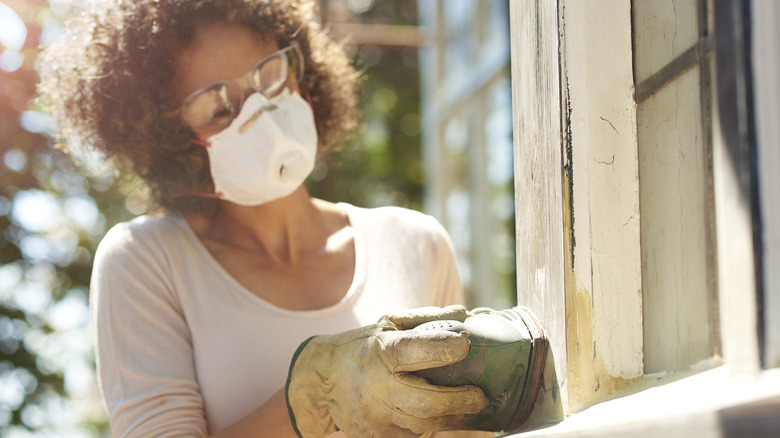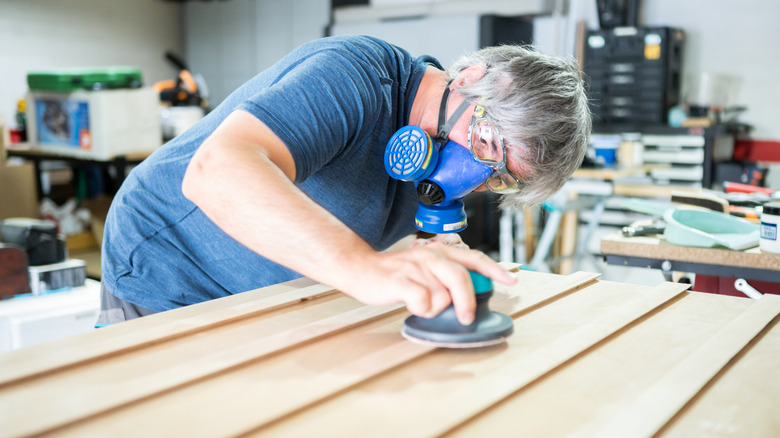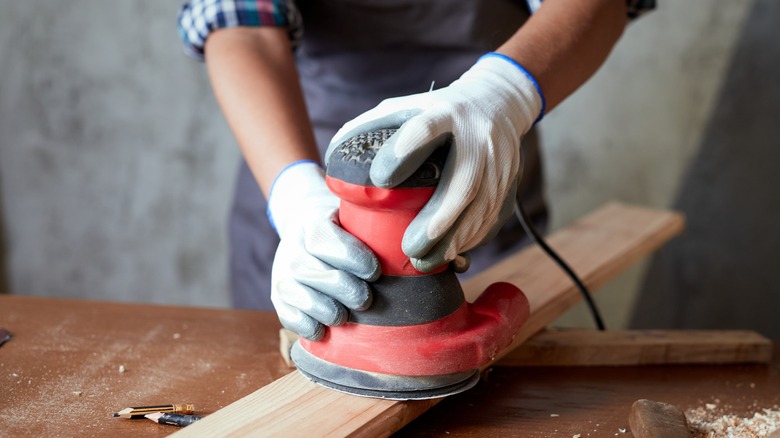Why You Should Wear A Mask While Sanding Wood And The Best Type To Use
Sanding wood is an essential task in the field of carpentry. Whether you're creating a new piece of furniture, restoring an antique, or simply refinishing your wooden floors, the tangible experience and satisfaction that come from transforming raw timber into a polished masterpiece are undeniable. However, it's important to recognize the frequently underestimated health hazards associated with this seemingly harmless activity. Simply put, it's important to wear a mask when sanding wood.
Woodworking involves cutting solid lumber into smaller pieces or shaping it to achieve desired contours. Unfortunately, the process of sanding generates tiny particles that can pose potential health risks when they become suspended in the air. These particles are not only mere remnants of your woodworking efforts; they typically contain harmful combinations of wood splinters, chemical residues from finishes or adhesives, as well as allergenic substances.
Once these minuscule particles become airborne, they have the ability to enter your respiratory system through inhalation and penetrate deep into your lungs. Prolonged exposure can lead to various health complications such as respiratory irritation, allergies, and even asthma. In more severe cases, conditions like chronic obstructive pulmonary disease may develop over time. Therefore, wearing a mask while sanding wood goes beyond being a recommended practice; it becomes paramount as an essential protective measure.
Which mask should you choose?
Choosing the correct mask hinges upon your specific woodworking requirements as well as your budgetary considerations. It's crucial to bear in mind that the effectiveness of these masks relies heavily on achieving a proper fit around your nose and mouth area — a snug seal is essential for preventing dust from bypassing the protective gear altogether. Engaging in fit-testing procedures recommended by manufacturers ensures maximum safeguarding capabilities while undertaking a variety of woodworking projects.
Selecting the right respiratory protection is essential for DIY projects involving dust and fumes to safeguard your lung health. Understanding mask certifications is key: N means not resistant to oils, R is somewhat resistant, and P is strongly resistant. Likewise, the number denotes particle filtration. N95 masks, for example, filter out 95% of particles but offer no protection against oil-based substances. Never compromise on mask quality — it's best to avoid those with ratings lower than N95. The highest possible protection would be a mask certified as a P100.
Tailor your mask choice to your project's needs. For lighter tasks like sanding or demolition, it might be acceptable to opt for standard disposable masks or those with exhalation valves for extended wear. Reusable fabric masks with replaceable filters are ideal for frequent use, while versatile masks with replaceable filters suit specific needs, such as HEPA filters for dust or activated charcoal filters for solvents and finishes. Prioritizing your respiratory health is vital during DIY work, so choose your mask accordingly.
Ways to keep your workspace dust free when sanding wood
While it is crucial to prioritize safety by wearing a mask when sanding wood, it's best to accent this protection by adopting a comprehensive approach to keeping dust out of your lungs.
A key aspect of safe woodworking is ensuring proper ventilation within your workspace. You can achieve this by using fans or opening windows and doors to facilitate the continuous flow of fresh air, thereby reducing the concentration of airborne dust particles. Moreover, serious woodworkers may choose to invest in a dust collection system, particularly for larger projects, as these can be highly effective in capturing and containing wood dust, preventing its dispersion. You could also wet the wood's surface before sanding, cutting, or drilling to keep dust from flying around. (In fact, wet sanding techniques can also help when working with drywall.)
Maintaining cleanliness within your workspace is vital to minimize the accumulation of dust on surfaces and tools alike. A clean working environment translates into enhanced safety standards. Overall, prioritizing safety measures in woodworking means adopting a multifaceted approach where wearing a mask serves as one step among other precautions, culminating in a well-rounded safety regimen that allows you to enjoy woodworking projects while reducing health risks effectively.


